1. changes to the biodiversity of populations
1.1. Mutations
1.1.1. Point Mutation - a change in on nucleotide base
1.1.1.1. Frameshift
1.1.1.1.1. Insertion
1.1.1.1.2. Deletion - affects all amino acids downstream
1.1.1.2. Nonsense - codes for the STOP codon, serious because all amino acids downstream will not be coded
1.1.1.3. Missense - code for a different amino acid
1.1.1.4. Silent - change in base but codes for the same amino acid, has no effect
1.1.2. Block Mutations - changes to the chromosomes
1.1.2.1. Inversion
1.1.2.2. Duplication
1.1.2.3. Deletion
1.1.2.4. Translocation
1.2. Sexual advantage - non-random mating
1.3. Natural Selection
1.3.1. Darwinism: 1. Struggle to Survive 2. Selection Pressure - what is the threat in the environment that threatens your survival 3. Selectively Advantageous traits - what is the trait that allows them to overcome and defeat other members of your species in facing the selection pressure *if you have the selectively advantageous trait, you are able to make a greater contribution to the gene poolm
1.3.1.1. 1. There is a struggle to survive. There is variation in the population in regards to XX 2. A selection pressure of XX was applied to the population 3. Those with XX have a selective advantage, and were more likely to survive and hence reproduce, to make a greater contribution to the gene pool. 4. Those with XXX do not have a selective advantage, were less likely to survive and not reproduce to make a smaller contribution to the gene pool
1.3.2. Artificial Breeding: humans deliberately intervene to determine what is considered selectively advantageous in animals (aesthetic/economy) and determine the course of its gene pool
1.3.2.1. Reduced genetic diversity
1.4. Random/Non-Random Environmental Changes
1.4.1. Random - Genetic Drift - have a random environment change to the population Ex: Tsunami
1.4.1.1. Bottleneck Effect: a large proportion of the population is killed, the new smaller population with reduced genetic diversity will give rise to a large population
1.4.1.2. Founder Effect - a smaller proportion of the population separates to inhabit a new area, reduced genetic diversity b/c the population needs to populate the new area
1.4.2. Non/Random - Genetic Flow
1.4.2.1. Immigration / Emigration: 1. Introduce new alleles - immigration 2. Reduce allele frequency - emigration
2. Changes in biodiversity over time
2.1. Fossils - preserved remains / traces of a once living organism
2.1.1. Conditions Favoured Fossilisations: - Buried Really Quicker, minimise exposure to scavengers - Hard parts - Low oxygen environments - Very cold/dry conditions
2.1.1.1. Process: 1. Organism dies and falls to Earth's surface 2. Remains are covered quickly with sediment to minimise scavengers 3. Over millions year the sediment compiles to form sedimentary rock, preserves the hard parts 4. Erosion exposes the fossils to be found
2.1.2. Fossil Record - a record of all the fossils found - Incomplete - Open to interpretation
2.2. Absolute vs. Relative Dating
2.2.1. Relative Dating: Relative age via analysing the stratum that it was found in Law of Superposition - the lower the strata the older it is, the higher the strata the newer is Index Fossils - found in a particular time period (known), abundant Ex: Trilobite
2.2.2. Absolute Dating: The exact year the fossil roamed in Radioactive Material/Half-Lives: Carbon-14 - 5,760 years | 50,000 years old Potassium-Argon 40 - 1.5 billion years Uranium- Thorium Dating - 14 billion years Scorpion - 100,000 years old
2.2.2.1. How do we determine half-life? Half-Life - how many years it takes for 50% of that chemical to decompose Carbon-12 > Carbon-14 0.5 mg Carbon 12 - 1.5 mg Carbon 14 1 : 3 25% - 12 | 75% - 14 100% - carbon 12 1 half life - 5,760 50% Carbon 12 50% Carbon 14 2 half life - 11,000 25% Carbon 12 3 half life 12.5% Carbon 12 Excretion Trace Fossil - 20,000 years old
2.3. Developmental Biology Comparative Embryology
2.3.1. Comparing the embryos of different species to determine their relationship The more similar the embryos look, the more closely related they are
2.4. Structural Morphology Comparing the body parts of different species to determine their relationship
2.4.1. Homologous Structures Same structure, shared a common ancestor Ex: Pentadactyl Limbs
2.4.2. Analogous Structures Different structure, similar function Relationships: Do not have a common ancestor, face similar selection pressures Sharks vs. Dolphins vs. Penguins
2.4.3. Vestigial Structures Doesn't have a function but suggests that many years ago they shared a common ancestor with the animals that have the vestigial structure

